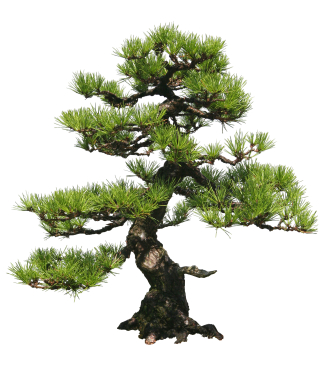Bonsai (pronounced “bone-sigh”) literally means, in both the Chinese and Japanese languages, “tree in a pot.” Originally developed in the Orient almost 2,000 years ago, today the art of bonsai is practiced throughout the world. Shape, harmony, proportion, and scale are all weighed carefully as art, and the human hand combines these in a common cause with nature.
A tree planted in a small pot is not a bonsai until it has been pruned, shaped, and trained into the desired shape. Bonsai are kept small by careful control of the plant’s growing conditions. Only branches important to the bonsai’s overall design are allowed to remain, and unwanted growth is pruned away. Roots are confined to a pot and are periodically clipped.
The appearance of old age of a plant is much prized, and bonsai may live hundreds of years. The living bonsai will change from season to season and from year to year, requiring pruning and training through its lifetime…and as time goes on, it will become more and more beautiful.
It is impossible to write a simple set of care rules. Every species of plant has its own special needs. Each location and environment is different, too, and these have to be considered. Therefore, it is important, when starting in bonsai, to read all you can on the art. Take advantage of your local bonsai club.
Join us in the Tennessee Valley Bonsai Society!

